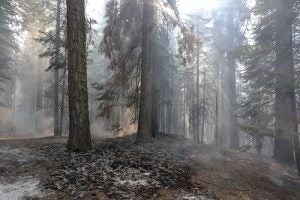Forest carbon credits may prove to be a useful tool to reduce net carbon emissions from land use and supplement overall emissions reductions. To be effective, however, carbon credits must represent real carbon storage that can be measured and attributed to the crediting system.
One of the hallmarks of a high-integrity carbon credit program is that they ensure “additionality,” meaning that the credited carbon storage or emissions reductions would not have occurred without the sale of carbon credits. Put another way, we need to ensure that landowners aren’t getting credit for conducting business as usual, and instead, all carbon credits represent net emissions reductions that can be attributed to the crediting program. It’s a scenario we’re watching play out in California’s carbon market. Read More











 The intense fires that have ravaged my neighboring communities over the last week have been on my mind constantly.
The intense fires that have ravaged my neighboring communities over the last week have been on my mind constantly.